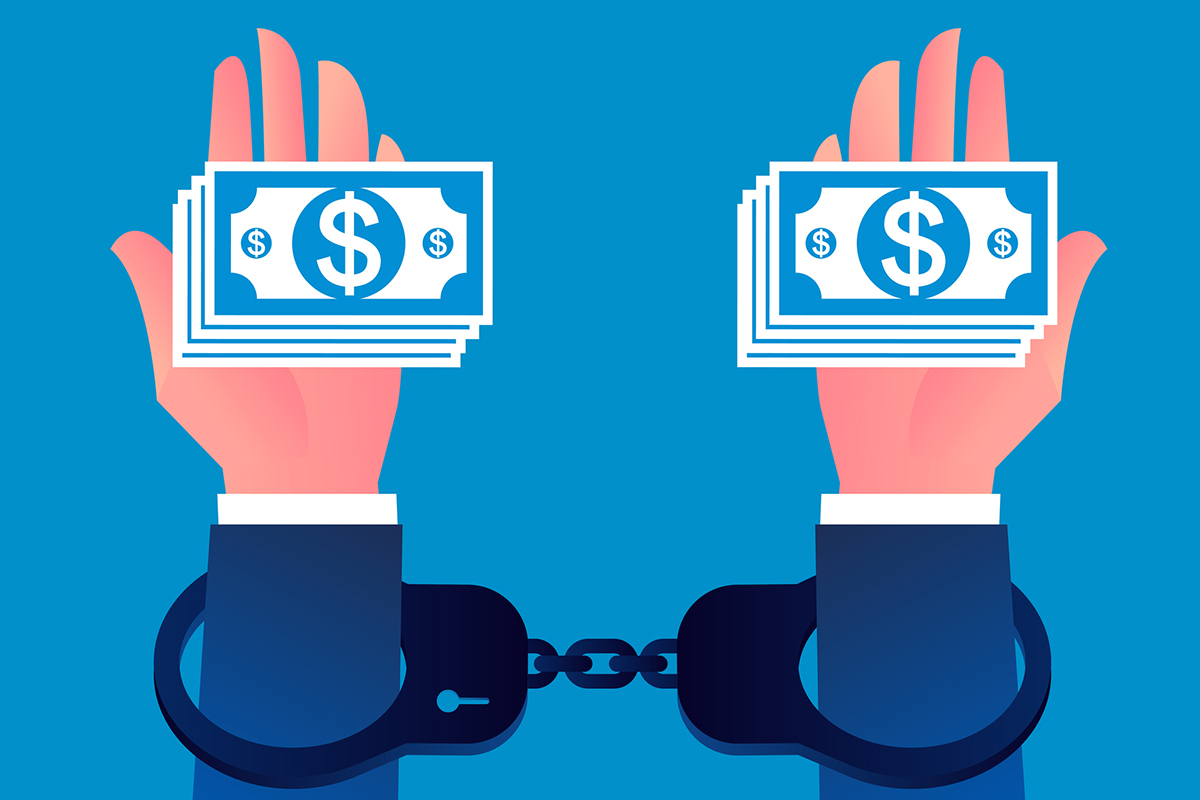
Mastering Customer Churn Prediction: Unleashing the Power of AI Marketing
September 15, 2023
Boosting Customer Retention with AI: Unleashing the Power of Loyalty Programs in AI Marketing
September 18, 2023The PDPA (Personal Data Protection Act)
The cornerstone of data protection in Singapore is the Personal Data Protection Act (PDPA). This legislation, enacted in 2012, governs the collection, use, and disclosure of personal data in the country. Its primary objective is to safeguard the personal information of individuals and ensure that organizations handle it responsibly.
- Data Protection Provisions: Under the PDPA, organizations are obligated to establish and implement policies and practices that comply with its data protection provisions. This includes obtaining consent for collecting and using personal data, ensuring the accuracy of data, and providing individuals with the right to access their data.
- Consent Requirements: One of the fundamental principles of the PDPA is the requirement for organizations to obtain consent before collecting and using an individual’s personal data. This consent should be clear, informed, and obtained for specific purposes. Individuals have the right to withdraw their consent at any time.
- Access and Correction: The PDPA grants individuals the right to access their personal data held by organizations. If they discover inaccuracies, they can request corrections. Organizations must respond to such requests within a stipulated timeframe.
PDPC (Personal Data Protection Commission)
To oversee compliance with the PDPA, Singapore established the Personal Data Protection Commission (PDPC). The PDPC is an independent government agency responsible for administering and enforcing the PDPA. Its key functions include:
-
Issuing Guidelines: The PDPC issues guidelines and advisories to help organizations understand and comply with the PDPA’s requirements. These guidelines cover various aspects of data protection, including consent, data breaches, and enforcement.
-
Investigating Breaches: The PDPC investigates data breaches and complaints related to data protection. It has the authority to impose fines and other penalties for non-compliance.
-
Promoting Awareness: The PDPC plays a crucial role in raising awareness about data protection issues in Singapore. It conducts outreach programs and educational initiatives to inform organizations and individuals about their rights and responsibilities under the PDPA.
Industry-specific regulations
While the PDPA provides a comprehensive framework for data protection in Singapore, certain industries may have specific regulations that apply to them. For example, the financial sector is subject to guidelines and regulations issued by the Monetary Authority of Singapore (MAS) to ensure the security of customer data.
Organizations operating in regulated industries must be aware of and comply with these sector-specific regulations in addition to the PDPA. Failure to do so can result in regulatory penalties and reputational damage.
GDPR implications
If your B2B lead generation activities involve the processing of personal data of individuals located in the European Union (EU), you must also consider the implications of the General Data Protection Regulation (GDPR). The GDPR is a comprehensive data protection regulation that applies to EU citizens’ data, regardless of where it is processed.
Key considerations regarding the GDPR in the context of B2B lead generation include:
-
Extraterritorial Reach: The GDPR applies to organizations located outside the EU if they process the personal data of EU residents. This means that Singaporean companies engaged in international B2B lead generation may need to comply with both the PDPA and GDPR.
-
Data Transfer Mechanisms: If you transfer personal data from Singapore to countries within the EU or other GDPR-covered regions, you must ensure that you have appropriate data transfer mechanisms in place, such as Standard Contractual Clauses (SCCs) or Binding Corporate Rules (BCRs).
-
Consent and Privacy Rights: The GDPR places a strong emphasis on obtaining clear and unambiguous consent for data processing. Individuals under the GDPR also have enhanced privacy rights, including the right to be forgotten and the right to data portability.
In summary, understanding the regulatory framework is essential for B2B lead generation in Singapore. The PDPA, enforced by the PDPC, sets the foundation for data protection, but organizations must also be mindful of industry-specific regulations and the potential impact of the GDPR when handling personal data.

Data Collection and Consent
Explicit vs. implicit consent
When it comes to data collection, the type of consent you obtain can make a significant difference in your compliance with data protection regulations, including Singapore’s PDPA. Let’s delve deeper into the concepts of explicit and implicit consent:
- Explicit Consent: This type of consent is the gold standard for data collection. It’s clear, specific, and leaves no room for interpretation. When you obtain explicit consent, individuals are fully aware of what they are agreeing to. For example, if you’re collecting email addresses for a newsletter, an explicit consent statement might say, “I agree to receive marketing emails from [Your Company] about [Specific Product/Service].”
- Implicit Consent: Implicit consent is often based on actions or behavior that suggest an individual’s agreement, even if they haven’t explicitly said so. For instance, if someone fills out a contact form on your website, it implies consent to contact them regarding the inquiry. However, implicit consent can be less robust than explicit consent and may not provide as strong legal protection.
While implicit consent can be valid in certain situations, it’s generally advisable to aim for explicit consent whenever possible. This ensures that individuals are fully informed and reduces the risk of misunderstandings or disputes.
Opt-in and opt-out mechanisms
In the world of data collection, the terms “opt-in” and “opt-out” are critical. They refer to the mechanisms by which individuals indicate their consent (opting in) or their desire to withdraw consent (opting out).
- Opt-In Mechanisms: Opt-in mechanisms are used to obtain affirmative consent from individuals. When someone opts in, they are actively agreeing to a specific action or use of their data. This can be achieved through checkboxes on forms, subscription confirmations, or other explicit actions. Opt-in mechanisms are the gold standard for obtaining consent because they leave no room for ambiguity.
- Opt-Out Mechanisms: Opt-out mechanisms, on the other hand, allow individuals to withdraw their consent or unsubscribe from further communications or data processing. This is a crucial aspect of compliance, as it ensures that individuals can easily discontinue their engagement with your organization if they choose to do so. Providing clear and accessible opt-out options is a legal requirement in many jurisdictions.
Consent records and management
Maintaining detailed and accurate records of consent is a fundamental aspect of compliance with data protection regulations. These records serve as evidence that you obtained valid consent and can be crucial in case of disputes or audits. Here are some key considerations:
-
What to Record: Consent records should include the date and time of consent, the method by which it was obtained (e.g., online form, phone call), the specific purposes for which consent was given, and any information provided to the individual at the time of consent.
-
Managing Consent: As your organization collects and uses data, it’s essential to have systems in place for managing consent records. This includes securely storing and easily retrieving records when needed. Additionally, you must have procedures in place for honoring opt-out requests promptly.
-
Consent Renewal: In some cases, consent may have an expiration date, especially if the data processing is ongoing. It’s essential to remind individuals of the ongoing consent and provide opportunities for them to renew or update their preferences.
Data localization requirements
The PDPA places restrictions on the cross-border transfer of personal data. In essence, it requires that organizations ensure that the data they collect and process is adequately protected, even if it is transferred outside of Singapore.
Here are some important points to consider regarding data localization requirements:
-
Cross-border Data Transfer: If your organization transfers personal data outside Singapore (e.g., to a server located in another country), you must ensure that the data continues to be protected in a manner consistent with the PDPA’s requirements.
-
Criteria for Transfer: The PDPA outlines certain criteria that, if met, allow for the transfer of personal data without explicit consent. These criteria include situations where the data recipient is bound by similar data protection laws or where the individual has been informed and consents to the cross-border transfer.
-
Binding Corporate Rules: Organizations may establish Binding Corporate Rules (BCRs) as a mechanism for facilitating international data transfers within the same corporate group. BCRs must be approved by the PDPC.
Understanding and complying with data localization requirements is vital for organizations engaged in B2B lead generation in Singapore. Failure to do so can result in legal and regulatory repercussions, so it’s crucial to assess your data transfer practices and take appropriate measures to protect the data, even when it crosses borders.

Transparency and Fair Practices
Data Breach Notifications
Data breaches are an unfortunate reality in the digital age, and how your organization responds to them can significantly impact your reputation and legal standing. Transparency and prompt notification are key components of fair practices when it comes to data breaches.
- Prompt Notification: The PDPA requires organizations to notify both affected individuals and the Personal Data Protection Commission (PDPC) of a data breach within a specified timeframe. This timeframe is typically 72 hours from the time the breach is discovered.
- Contents of Notification: Notifications to affected individuals should include details about the breach, the types of data affected, potential consequences, and steps individuals can take to protect themselves. Notifications to the PDPC should provide a comprehensive overview of the breach, including its scope and impact.
- Mitigation Measures: In addition to notification, organizations are expected to take immediate steps to mitigate the impact of the breach and prevent further unauthorized access. This may involve securing compromised systems, changing access credentials, or cooperating with law enforcement.
Purpose Limitation
The principle of purpose limitation is a fundamental concept in data protection. It means that organizations should only collect and use personal data for the purposes they have explicitly informed individuals about. Here’s what you need to know:
- Explicit Purpose: When you collect data from individuals, it should be for a specific, legitimate purpose. For example, if you collect email addresses for a newsletter subscription, you should not use those email addresses for unrelated purposes, such as selling them to third parties.
- Consent for New Purposes: If you intend to use the data for a new purpose that was not originally communicated to individuals, you should seek their explicit consent for the new use.
- Data Minimization: To adhere to purpose limitation, collect only the data that is necessary for the stated purpose. Avoid over-collecting data that you do not need for the intended use.
Accuracy and Relevance
Maintaining the accuracy and relevance of the personal data you hold is another essential component of fair data practices. Here’s why it matters:
- Individual Rights: Individuals have the right to access their personal data and request corrections if they find inaccuracies. It’s essential to have processes in place to respond to such requests promptly.
- Data Review: Regularly review the personal data you hold to ensure that it remains accurate and up-to-date. This is particularly important for data that has a shelf life, such as contact information.
- Relevance to Purpose: Personal data should remain relevant to the purposes for which it was collected. If you no longer require certain data for the stated purpose, consider securely deleting it.
Third-party Data Sources
Many organizations source data from third-party providers to augment their lead generation efforts. While this can be a valuable strategy, it introduces additional considerations related to data transparency and fairness:
- Source Verification: Before using data from third-party sources, verify that the source has obtained the data legally and that individuals have consented to their data being shared.
- Disclosure to Individuals: Inform individuals about the use of third-party data if it affects them. Transparency is key to maintaining trust.
- Due Diligence: Conduct due diligence when selecting third-party data providers. Ensure that they have robust data protection practices in place.
Incorporating these principles of transparency and fairness into your data handling practices not only helps you comply with regulations but also fosters trust with your leads and customers.

Telemarketing and Do-Not-Call (DNC) Registry
Telemarketing Rules
Telemarketing, while an effective B2B lead generation tool, is subject to stringent rules and regulations in Singapore. To navigate these rules safely, it’s essential to understand the following key aspects:
- Clear and Unambiguous Consent: Before making any marketing calls, organizations must obtain clear and unambiguous consent from individuals. This means that individuals should have a full understanding of what they are agreeing to, including the purpose and frequency of the calls.
- Identify and Respect DNC Requests: Organizations are legally required to check the Do-Not-Call (DNC) Registry before making telemarketing calls. The DNC Registry is a list of phone numbers of individuals who have opted out of receiving unsolicited marketing calls. Organizations must respect these requests and refrain from calling registered numbers.
- Identification of Caller: When making telemarketing calls, organizations must clearly identify themselves and provide their contact information. This transparency is a legal requirement and helps build trust with potential leads.
- Time Restrictions: Telemarketing calls are generally prohibited on Sundays and public holidays, as well as before 9 am and after 8 pm on other days, unless individuals have expressly consented to receive calls during these times.
DNC Registry Overview
The Do-Not-Call (DNC) Registry is a central component of Singapore’s telemarketing regulations. Understanding how it works is essential for compliance:
- Individual Registration: Individuals have the option to register their phone numbers on the DNC Registry to avoid unsolicited marketing calls. Organizations are legally obligated to check this registry before making telemarketing calls.
- Corporate Registration: Besides individual registration, corporations can also register their numbers on the DNC Registry to prevent unsolicited telemarketing calls. This is especially relevant for B2B lead generation, where calls may target business numbers.
- Types of DNC: There are three types of DNC in Singapore: “No Voice Call,” “No Text Message,” and “No Fax Message.” Individuals can choose to block one or more of these types of communications.
- Validity Period: Registrations on the DNC Registry are valid for three years, after which individuals or corporations must renew their registration if they wish to continue blocking unsolicited calls.
Obtaining Clear Consent for Calls
To comply with telemarketing rules, it’s crucial to obtain clear and unambiguous consent before making marketing calls. Here’s how you can achieve this:
- Consent Statement: When seeking consent for telemarketing calls, use a clear and specific statement that outlines the purpose of the calls and what individuals can expect. For example, “I agree to receive marketing calls from [Your Company] regarding [Specific Product/Service].”
- Recording Consent: Maintain detailed records of consent, including the date, time, and method by which consent was obtained. These records are essential for compliance and can serve as evidence in case of disputes.
- Respecting Opt-out Requests: Honor opt-out requests promptly. If an individual asks to be removed from your calling list, ensure that they are not contacted for telemarketing purposes in the future.
Compliance Challenges and Fines
Compliance with telemarketing regulations can be challenging, and the consequences of non-compliance can be significant. Here are some common compliance challenges and potential fines:
- Complex Database Checks: Checking the DNC Registry and ensuring compliance with individuals’ opt-out preferences can be technically complex, especially for organizations with large contact databases.
- Fines for Non-compliance: The PDPC has the authority to impose fines for telemarketing violations. Fines can range from thousands to millions of dollars, depending on the severity of the violation.
- Reputation Damage: Non-compliance can also lead to reputational damage, as individuals and businesses may view unsolicited calls as intrusive and unethical.
It’s crucial for organizations engaged in B2B lead generation through telemarketing in Singapore to invest in robust compliance mechanisms, including staff training, database management, and monitoring systems, to navigate this regulatory landscape safely.

Email Marketing and SPAM Control
CAN-SPAM Act vs. PDPA
Email marketing is a powerful tool for B2B lead generation, but it’s subject to regulations both in the United States and Singapore. Understanding the differences between the CAN-SPAM Act and the PDPA is essential for compliance:
- CAN-SPAM Act (United States): The CAN-SPAM Act sets the rules for commercial email in the United States. It requires, among other things, that email marketers provide a clear way for recipients to opt out of future emails, include a valid physical postal address, and not use deceptive subject lines or headers.
- PDPA (Singapore): The PDPA in Singapore applies to email marketing activities as well. It mandates that organizations obtain consent before sending marketing emails, provide opt-out mechanisms, and be transparent about their identity and contact information.
- Compliance with Both: If you’re conducting email marketing campaigns that target recipients in both the United States and Singapore, you need to ensure compliance with the requirements of both the CAN-SPAM Act and the PDPA.
Email Opt-in Best Practices
Building a high-quality email list is crucial for successful B2B lead generation. Here are some best practices for email opt-ins:
- Double Opt-in Verification: Consider using double opt-in verification, where individuals must confirm their subscription by clicking a link in a confirmation email. This adds an extra layer of consent and helps ensure that subscribers are genuinely interested.
- Clear Disclosure: Clearly disclose what individuals can expect when they subscribe. Let them know about the type and frequency of emails they’ll receive and the value they’ll gain from being a subscriber.
- Easy Opt-out: Make it easy for subscribers to opt out at any time. Include a visible and accessible unsubscribe link in every email.
- Privacy Policy: Have a comprehensive privacy policy that explains how you collect, use, and protect data. Link to this policy in your subscription forms.
Unsubscribe Mechanisms
Including an easy-to-use unsubscribe mechanism in your emails is not only a legal requirement but also a best practice for maintaining a positive brand image. Here’s how to do it right:
- One-click Unsubscribe: Ensure that the unsubscribe link can be easily accessed with a single click. Avoid requiring recipients to log in or provide additional information to unsubscribe.
- Prompt Processing: Once someone unsubscribes, promptly process their request. It’s a legal requirement to honor opt-out requests within ten business days.
- Opt-out Confirmation: After a recipient unsubscribes, send a confirmation email to let them know that their request has been received and processed.
Content and Subject Line Guidelines
Crafting email content that complies with regulations and engages your audience is an art. Here are some content and subject line guidelines:
- Honest Subject Lines: Avoid deceptive subject lines that mislead recipients. The subject line should accurately represent the content of the email.
- Identifiable Sender: Ensure that the sender’s name and email address are easily identifiable as belonging to your organization.
- Clear CTA: Include a clear call-to-action (CTA) that tells recipients what you want them to do, whether it’s to click a link, download a resource, or contact your sales team.
- Value-driven Content: Provide value to your recipients. Share informative content, industry insights, and solutions to their pain points.
In summary, email marketing can be a highly effective tool for B2B lead generation, but it must be conducted within the boundaries of regulations like the CAN-SPAM Act and the PDPA. Following best practices for opt-ins, opt-outs, and email content is essential to maintain compliance and build positive relationships with your leads.

Data Security and Storage
Secure Data Handling Practices
The security of personal data is paramount, and organizations must implement secure data handling practices to protect this sensitive information. Here are key considerations:
- Access Controls: Limit access to personal data to authorized personnel only. Implement role-based access controls to ensure that employees can access only the data necessary for their roles.
- Encryption: Use encryption to protect data both in transit and at rest. Data encryption safeguards information from unauthorized access in case of breaches or security incidents.
- Regular Audits: Conduct regular security audits and assessments to identify vulnerabilities and risks. Address any issues promptly to enhance data security.
- Employee Training: Train employees on data security best practices, including the handling of sensitive information and recognizing potential threats like phishing attempts.
Encryption and Data Protection
Data encryption is a critical component of data protection. It involves encoding data in such a way that only authorized parties can access and understand it. Here’s how encryption is essential for compliance and security:
- Protection Against Unauthorized Access: Encryption ensures that even if data is intercepted or stolen, it remains unreadable without the encryption keys. This is crucial for safeguarding personal data.
- Secure Communication: When data is transmitted over networks, such as the internet, encryption ensures that it cannot be easily intercepted and deciphered by malicious actors.
- Data at Rest: Encrypting data at rest means that even if someone gains physical access to storage devices (e.g., hard drives or servers), they cannot access the data without the encryption keys.
Data Retention Policies
Data retention policies are essential for managing personal data responsibly. These policies dictate how long an organization keeps data and when it should be securely disposed of. Here are key considerations:
- Legal Requirements: Ensure that your data retention policies align with legal requirements. Different types of data may have different retention periods mandated by law.
- Purpose-based Retention: Align data retention periods with the purposes for which the data was collected. Once data is no longer needed for those purposes, it should be deleted securely.
- Secure Disposal: When data reaches the end of its retention period, it should be securely disposed of to prevent unauthorized access. Secure disposal methods may include data shredding or secure erasure.
- Documentation: Maintain clear records of your data retention policies and the processes you follow to implement them. This documentation can be valuable in demonstrating compliance.
Cross-border Data Transfers
In today’s global business environment, cross-border data transfers are common. However, when personal data crosses international boundaries, organizations must take measures to protect it. Here’s what you need to consider:
- Legal Mechanisms: Understand the legal mechanisms that allow for cross-border data transfers. In some cases, such as transferring data from Singapore to EU countries, organizations may need to rely on Standard Contractual Clauses (SCCs) or Binding Corporate Rules (BCRs).
- Assessment of Data Protection Laws: Before transferring data, assess the data protection laws in the destination country. Ensure that they provide an adequate level of protection for the data being transferred.
- Data Minimization: Minimize the amount of data transferred internationally. Only transfer data that is necessary for the intended purpose.
- Security Measures: Implement additional security measures to protect data during cross-border transfers. This may include strong encryption and secure transmission methods.
Compliance with data security and storage requirements is not only a legal obligation but also essential for maintaining the trust of your leads and customers. Implementing robust security measures and adhering to data retention policies helps safeguard personal data from unauthorized access and potential breaches.

Enforcement and Penalties
PDPC Enforcement Powers
The Personal Data Protection Commission (PDPC) in Singapore has significant enforcement powers to ensure compliance with the PDPA. Understanding these powers is crucial:
- Investigation: The PDPC can conduct investigations into potential breaches of the PDPA. This may involve requesting documents, interviewing witnesses, and inspecting premises.
- Warning Notices: If the PDPC finds that an organization has breached the PDPA, it can issue warning notices. These notices outline the nature of the breach and the steps required to rectify it.
- Directions and Orders: The PDPC can issue directions and orders to organizations to take specific actions to comply with the PDPA. This may include stopping certain data processing activities or implementing specific data protection measures.
Penalties for Non-compliance
Non-compliance with the PDPA can result in significant penalties. These penalties are designed to deter organizations from violating data protection regulations and to protect individuals’ privacy rights. Key points to note include:
- Financial Penalties: The PDPC can impose financial penalties for breaches of the PDPA. These fines can range from SGD 1 million (for organizations) to SGD 10,000 (for individuals) per breach.
- Continuing Offenses: Organizations that continue to violate the PDPA after being penalized may face additional fines, which can accumulate for each day the non-compliance persists.
- Reputational Damage: Beyond financial penalties, non-compliance can lead to reputational damage, loss of customer trust, and a negative impact on business operations.
- Liability of Individuals: In some cases, individuals within an organization may also be held personally liable for PDPA breaches if they are found to have authorized or consented to the breach.
Recent Enforcement Cases
Staying informed about recent enforcement cases can provide valuable insights into how the PDPC interprets and applies the PDPA. Some recent enforcement cases have highlighted common compliance issues, including:
- Inadequate Consent Practices: Cases have arisen where organizations were found to have obtained insufficient consent for data collection and processing activities.
- Data Breaches: Several enforcement cases involved organizations that failed to promptly notify affected individuals and the PDPC of data breaches, as required by the PDPA.
- Lack of Security Measures: Organizations that did not implement adequate data security measures to protect personal data faced penalties.
- Telemarketing Violations: Non-compliance with telemarketing rules, including ignoring the DNC Registry and failing to obtain clear consent for calls, has resulted in enforcement actions.
By studying recent enforcement cases, organizations can learn from the mistakes of others and proactively enhance their own compliance efforts. This includes implementing robust data protection measures, obtaining clear consent, and promptly addressing any breaches.
Building a Compliance Culture
Compliance with data protection regulations is not just a matter of meeting legal requirements; it’s also about building a culture of compliance within your organization. Here’s how to do it:
- Leadership Commitment: Leadership must demonstrate a commitment to data protection and set an example for the entire organization.
- Employee Training: Provide regular training and awareness programs for employees to ensure they understand their responsibilities and the importance of compliance.
- Data Protection Officer (DPO): Appoint a Data Protection Officer (DPO) responsible for ensuring compliance with data protection regulations and acting as a point of contact with the PDPC.
- Continuous Monitoring: Implement processes for continuous monitoring and auditing of data protection practices to identify and address compliance gaps.
- Documentation and Records: Maintain thorough records of compliance efforts, including policies, procedures, training records, and incident reports.
In conclusion, building a compliance culture is not just about avoiding penalties; it’s about earning the trust of your leads and customers by demonstrating a commitment to protecting their personal data.


